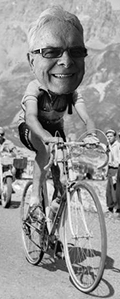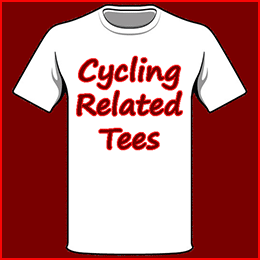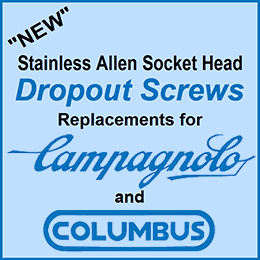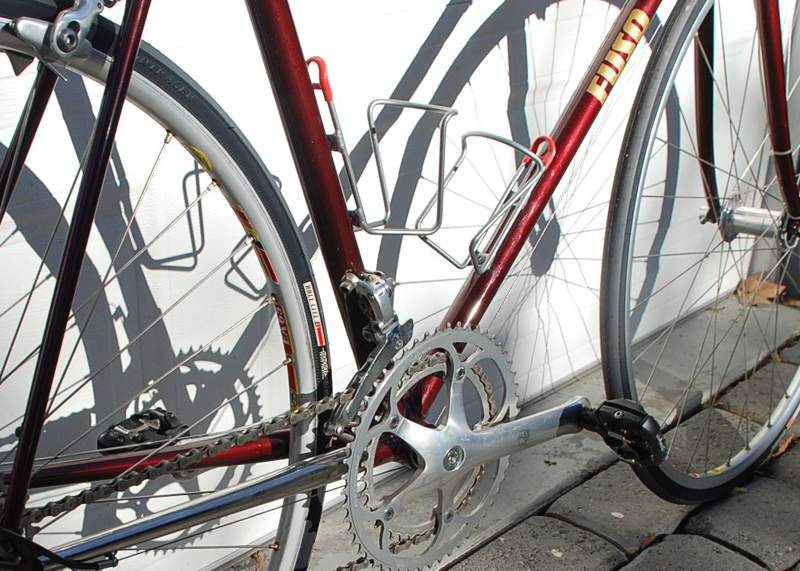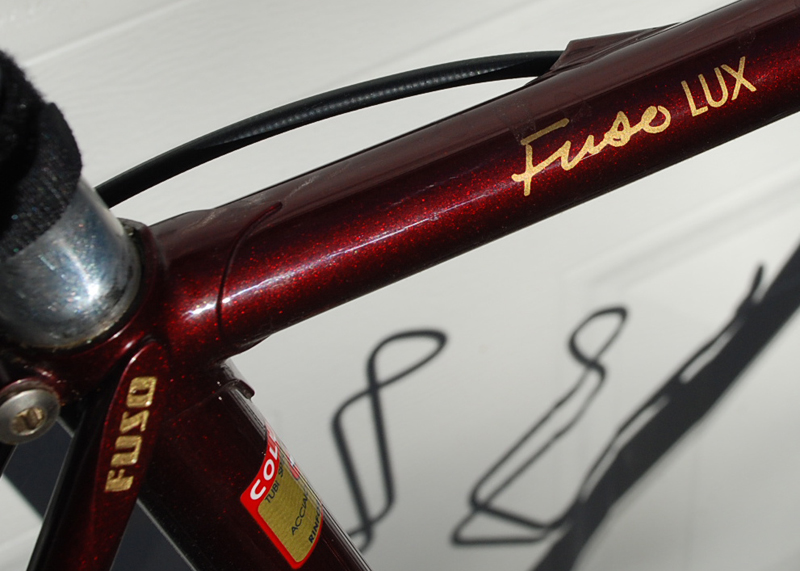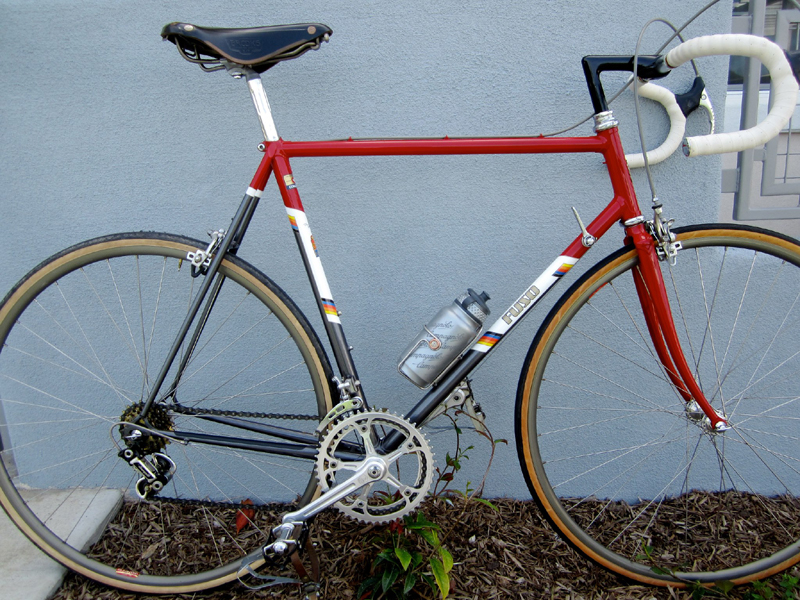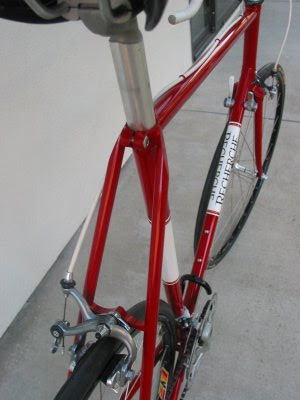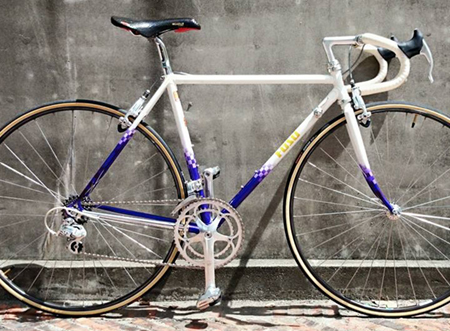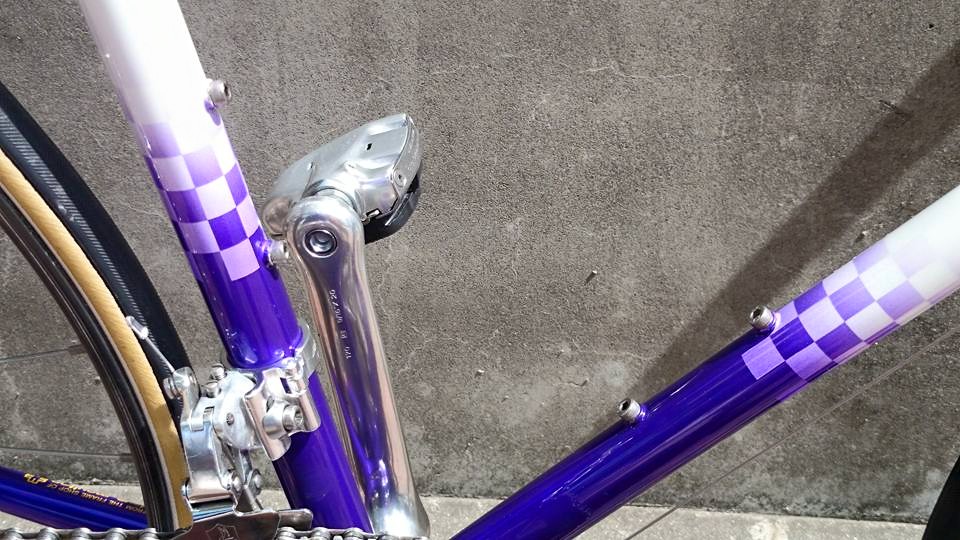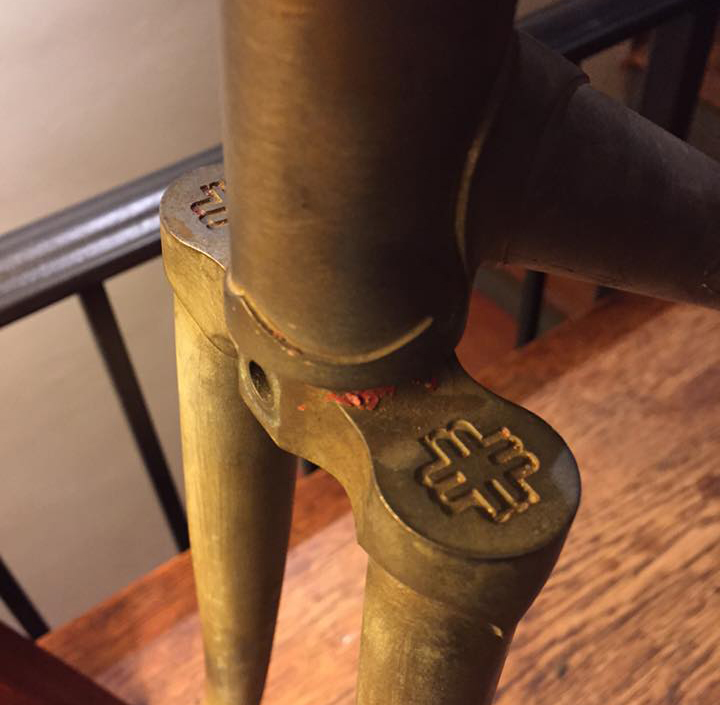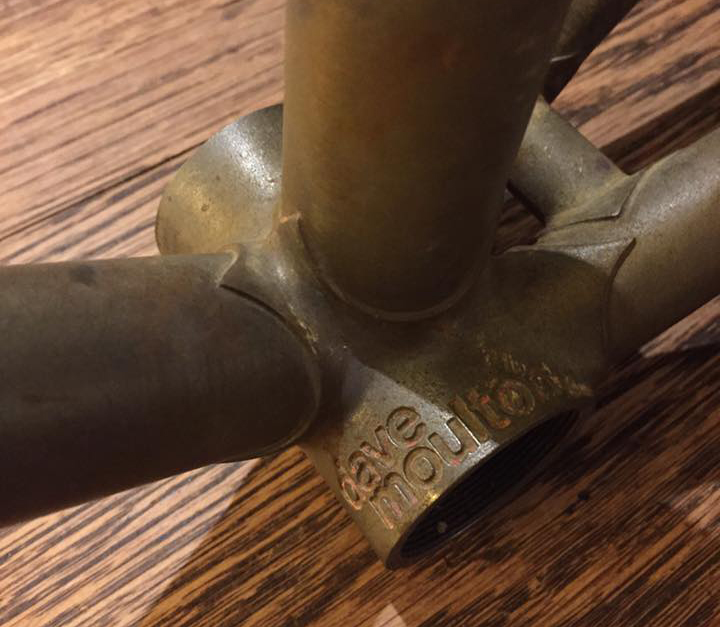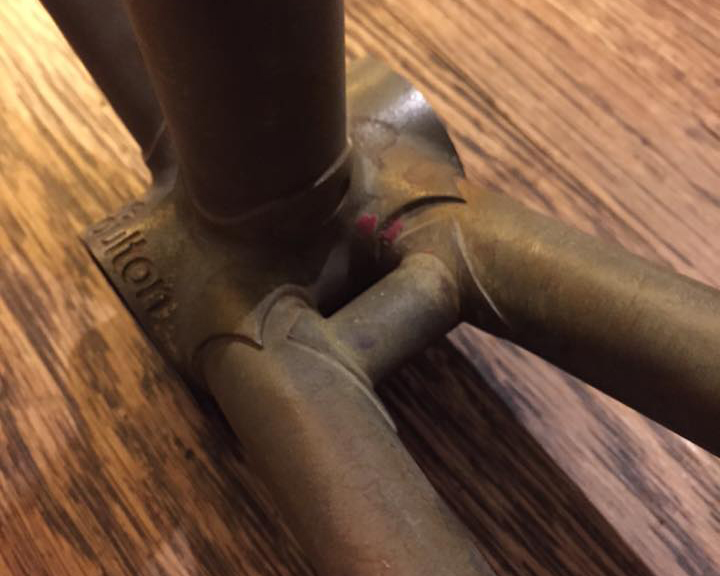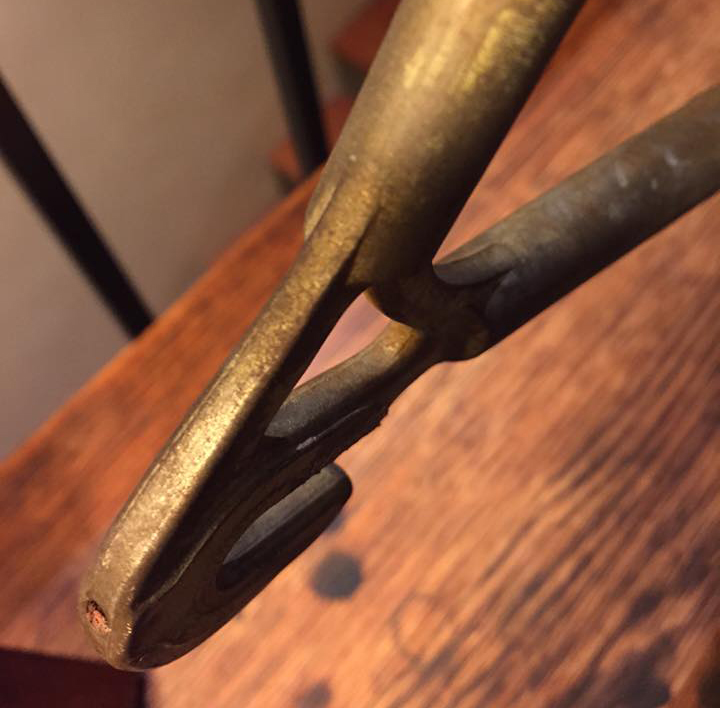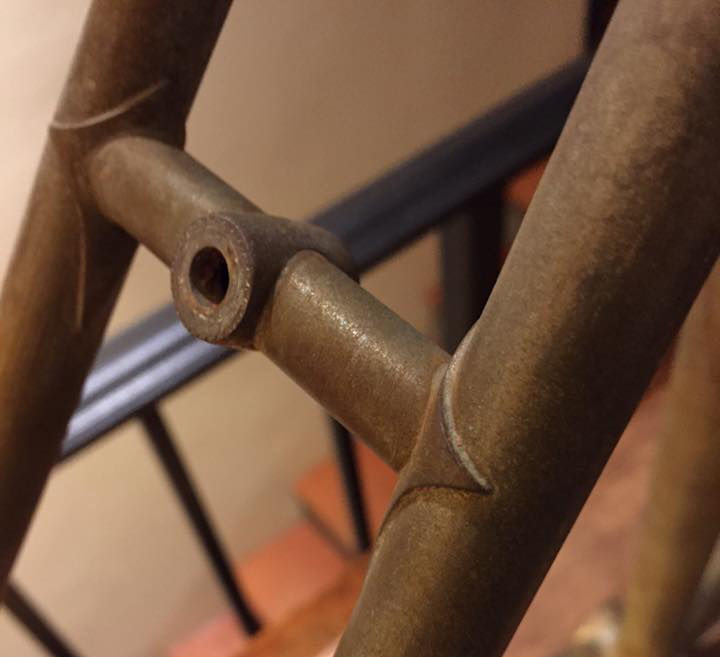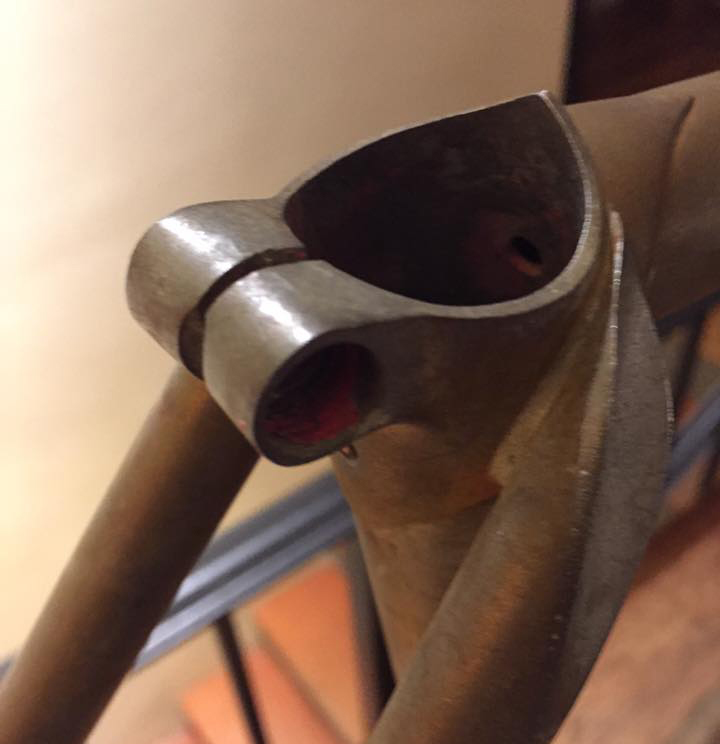Some I remember
 Wed, March 15, 2017
Wed, March 15, 2017  I don’t remember every individual frame I built, there were too many of them, but those I do remember it is usually some little detail about the frame or the particular customer that will trigger a memory. And when someone sends me pictures years later, often after the frame or bike has changed hands, I will say to myself, “Oh yes, I remember this one.”
I don’t remember every individual frame I built, there were too many of them, but those I do remember it is usually some little detail about the frame or the particular customer that will trigger a memory. And when someone sends me pictures years later, often after the frame or bike has changed hands, I will say to myself, “Oh yes, I remember this one.”
The one pictured above for example was built for the manager of Two Wheel Transit Authority, a large bike store in Huntington Beach, California, that sold a lot of bikes for me through most of the 1980s. I remember the customer visiting my shop in San Marcos in 1985 as clearly as if it were a few weeks ago.
It was unusual to see a customer in person as most of my orders came through bike dealers,
However, this particular customer was representing one of my biggest dealers, so it was an exception.
The frame ordered was a custom ‘dave moulton’ built in Reynolds 753,
Another reason I remember this particular frame, when I asked the customer what color paint? He answered “Surprise me.”
This is a freedom I rarely experienced. On all my custom frames the paint was always “Understated.” I felt that gaudy or flashy paint schemes would take away from the fine detail in the metalwork of the frame.
 This one I simply mixed black and white to come up with a rather plain looking grey. But after applying black decals, I added a blue pearl to the final clear coat overall, giving the whole frame a blue sheen, especially in bright sunlight, and the decals appear as a dark midnight blue.
This one I simply mixed black and white to come up with a rather plain looking grey. But after applying black decals, I added a blue pearl to the final clear coat overall, giving the whole frame a blue sheen, especially in bright sunlight, and the decals appear as a dark midnight blue.
The pearl additive comes in the form of a paste in a small jar. A tiny amount on the end of a mixing stick, stirred into the clear Imron, and the overall finish takes on the color of the additive. Blue, green, red, silver, gold, many variants are available.

Pictures of this second frame I remember, came to me recently. It is a Fuso LUX model built in Reynolds 653. One of a kind I believe, with many of the features that were usually reserved for my custom frames. But that is not why I remember this one.
It was a persnickety SOB of a customer who insisted I measure this frame from center of the bottom bracket to the center of the top tube. And stamp the bottom bracket to reflect this.
 As most know I always measured my frames center to top, the standard English way.
As most know I always measured my frames center to top, the standard English way.
Why did do that? It was all I knew, I had always measured frames that way.
I was not exposed to Italian frames (Measured Center to Center.) until I came to the US.
Also it was not something I discovered the moment I stepped of the plane at Kennedy Airport.
By the time I realized that most in the US measured center to center, it was too late. I had a ton of frames out there already measured and stamped center to top, and it would have been chaos to change at the height of production in the mid-1980s. I had to remain consistent.
 This frame was a 54cm. by my usual standard, but I had to stamp it 52.5 C.
This frame was a 54cm. by my usual standard, but I had to stamp it 52.5 C.
I added the letter “C” to alert any future owner this was not measured the same as every other frame I built.
This bike is now a show piece in a bike store in El Paso, Texas. The Bicycle Company, drop by and take a look if you are in that area.
So there you have it. Two frames I remember, but for two completely different reasons.
The one because I knew the customer and was given the freedom to create paint of my own choosing. The other because my freedom was taken from me. A piddling little detail that should not annoy me, but it does.
This second frame was built in 1990 when business was dropping off, and I allowed myself to be manipulated for monetary gain. Something I regret, and know it is the reason it still annoys me.
